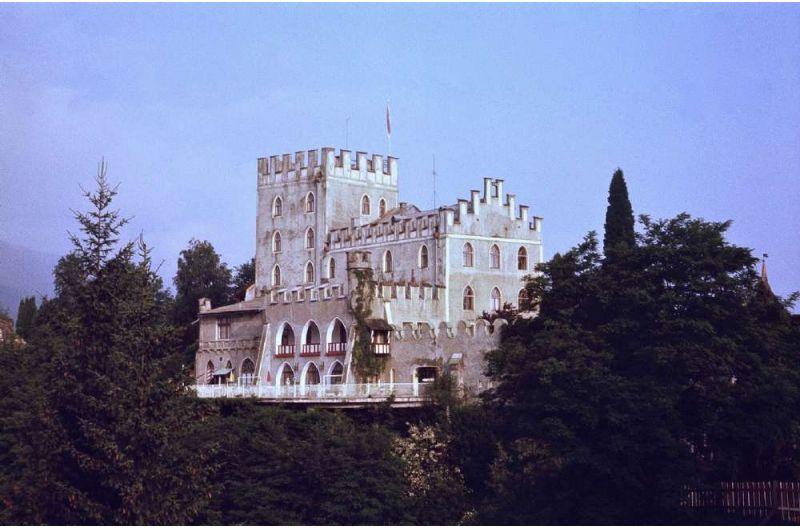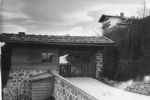Battle of Itter Castle
- 12
- See on map
The Battle of Itter Castle pitted American troops aided by Wehrmacht soldiers and newly-liberated French political figures held in this Austrian fortress against elements of the Waffen-SS at the end of the World War II. Largely due to the unlikely alliance it gave rise to, the battle is said to be the "strangest" of the Second World War
On May 3, 1945, Zvonimir Čučković, a member of the Yugoslav Communist resistance who was working on the prison's upkeep, left the castle under the pretext of running an errand for the prison commandant, Sebastian Wimmer. Čučković carried with him a letter in English asking for Allied help, which he was to give to the first American he met.
With the town of Wörgl 8 kilometers away in the mountains still occupied by German troops, Čučković followed the valley of the Inn River in the direction of Innsbruck, 64 kilometers away. Late in the evening, he reaches the outskirts of the city and encounters a vanguard group of the 409th Infantry Regiment of the 103rd Infantry Division of the US VI Corps, and passes on to them the message from the prisoners in the castle. This vanguard is unable to effect a rescue but promises Čučković a reply from their headquarters on the morning of May 4.
At dawn, an armored vehicle is dispatched to the castle but is halted by shelling just beyond Jenbach, halfway to Itter, then recalled by superiors to follow the American 36th Division east. Only two jeeps of auxiliary personnel continue on their way to the castle.
After Čučković's non-return and the death in prison of former Dachau commandant Eduard Weiter under suspicious circumstances on May 2, Wimmer fears for his own life and abandons his post. The SS-Totenkopfverbände guards leave the castle shortly afterwards, with the prisoners taking control of the castle and equipping themselves with the abandoned weapons.
Having not learned of the outcome of Čučković's mission, prison officials accept the offer of a Czech cook, Andreas Krobot, to travel to Wörgl at midday on May 4, in the hope of obtaining help. Writing a note similar to Čučković's, they succeed in contacting the Austrian resistance in this town, which had recently been abandoned by Wehrmacht forces but reoccupied by Waffen-SS troops. They are taken to Major Josef Gangl (de), commander of the remnants of a unit of Wehrmacht soldiers who were ordered to retreat but have instead put themselves at the head of the local resistance.
Gangl seeks to maintain his unit's position in the town to protect local residents from SS reprisals. Nazi loyalists shoot at any window displaying a white or Austrian flag, and summarily execute men considered possible deserters.
At about the same time, a reconnaissance unit of four Sherman tanks from the 23rd Tank Battalion, 12th Armored Division, XXI US Corps, under the command of Captain John C. "Jack" Lee, reaches Kufstein, Austria, 13 km to the north. There, in the town square, Lee's battalion slows down, waiting for the 12th to be relieved by the 36th Infantry Division. Gangl asks Lee to help them, and doesn't hesitate to volunteer to lead the rescue mission. Captain Lee immediately obtains permission from his HQ.
After a personal reconnaissance of the castle with Gangl in the Major's Kübelwagen, Lee leaves two of his tanks but requisitions five more and has the support of the 142nd Infantry Regiment as well as the 36th. En route, Lee is forced to send back reinforcements when a bridge proves too narrow. Leaving one of his tanks behind to guard the bridge, he continued accompanied only by 14 American soldiers, Gangl and a driver, as well as a truck carrying ten former German artillerymen. At 6 km from the château, they defeat a group of SS soldiers attempting to set up a roadblock.
Meanwhile, the French prisoners have asked an SS officer, Kurt-Siegfried Schrader, with whom they befriended in Itter during his convalescence from wounds, to take over their defense. When Lee arrives at the castle, the prisoners warmly welcome the rescue force, but are disappointed by its small size. Lee places the men under his command in defensive positions around the château and positions his tank, "Besotten Jenny", at the main entrance.
Lee orders the French prisoners to hide, but they remain outside and fight alongside American and Wehrmacht soldiers. Throughout the night, the defenders are harassed by a reconnaissance force sent to assess their strength and probe the fortress for weaknesses. On the morning of May 5, a force of 100-150 Waffen-SS from the 17th SS Götz von Berlichingen Division launched an attack. Before the main assault began, Gangl was able to telephone Alois Mayr, the Austrian resistance leader in Wörgl, and request reinforcements. Only two other German soldiers under his command and a young member of the Austrian resistance, Hans Waltl, could be picked up to help them, and this meagre reinforcement quickly made its way to the castle. The Sherman tank provided machine-gun fire support until it was destroyed by German fire from an 88 mm cannon; it was occupied at this time solely by an engineer seeking to repair the tank's faulty radio, the latter managed to leave the tank unharmed.
Meanwhile, in the early afternoon, the request for reinforcements finally reached the 142nd Infantry Regiment of the 36th Infantry Division of the 21st Corps of the 7th Army, which arrived on the scene as reinforcements. They arrived at around 3:00 p.m. and the SS were quickly defeated. Around a hundred SS prisoners were captured. Major Josef Gangl was the only casualty on the besieged side. The French prisoners are evacuated to France that evening, reaching Paris on May 10.
Source Wikipedia
Photo credit Steve J. Morgan



